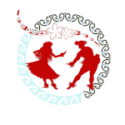In Tahitian dance, Tā’iri toma is another key hip movement that adds dynamic expression and complexity to the choreography. Like other movements in ‘Ori Tahiti (Tahitian dance), it is rooted in rhythm and precision, serving as both a technical and artistic element of the performance.
https://www.youtube.com/watch?v=LZ6_hF9u_Ws
Understanding Tā’iri toma
- Translation: The term tā’iri toma loosely translates to “striking the toma,” with toma referring to a specific point or target. It implies a rhythmic, deliberate action that emphasizes hitting or accenting beats.
- Technique:
- The dancer uses their hips to make quick, accented side-to-side or diagonal movements, often sharper than the flowing motions like tā’iri tāmau or fa‘arapu.
- The movement is synchronized with drumbeats (to‘ere or pahu), creating a visual and auditory emphasis.
- The dancer’s knees remain bent, and weight shifts between the feet to generate the power and control required for the movement.
Artistic and Cultural Role
- Accentuation of Rhythm:
- Tā’iri toma is often used to mark specific beats in the music, serving as a physical representation of the drummer’s intricate rhythms.
- It is frequently performed during transitions or to highlight the climax of a dance sequence.
- Expressiveness and Intensity:
- This movement adds intensity to a performance, showcasing the dancer’s ability to execute sharp, defined actions while maintaining grace.
- It complements faster-paced dances like ‘ōte’a, which are driven by powerful drum patterns.
- Symbolism and Interpretation:
- Like other Tahitian dance movements, tā’iri toma reflects the dancer’s connection to the natural world, the story being told, or the communal energy of the performance.
Training and Mastery
- Strength and Precision: Learning tā’iri toma requires strong control of the lower body, especially the core and legs, to achieve the sharp, defined motions.
- Synchronization: Dancers must be adept at listening to the drumbeats and timing their movements perfectly, as tā’iri toma often punctuates key moments in the music.
- Integration: It is typically combined with other movements like tā’iri tāmau or steps that involve traveling across the stage.
